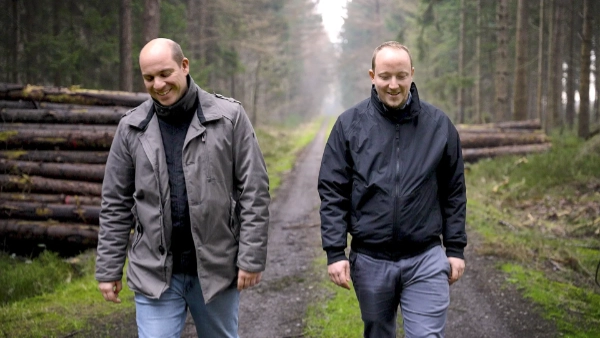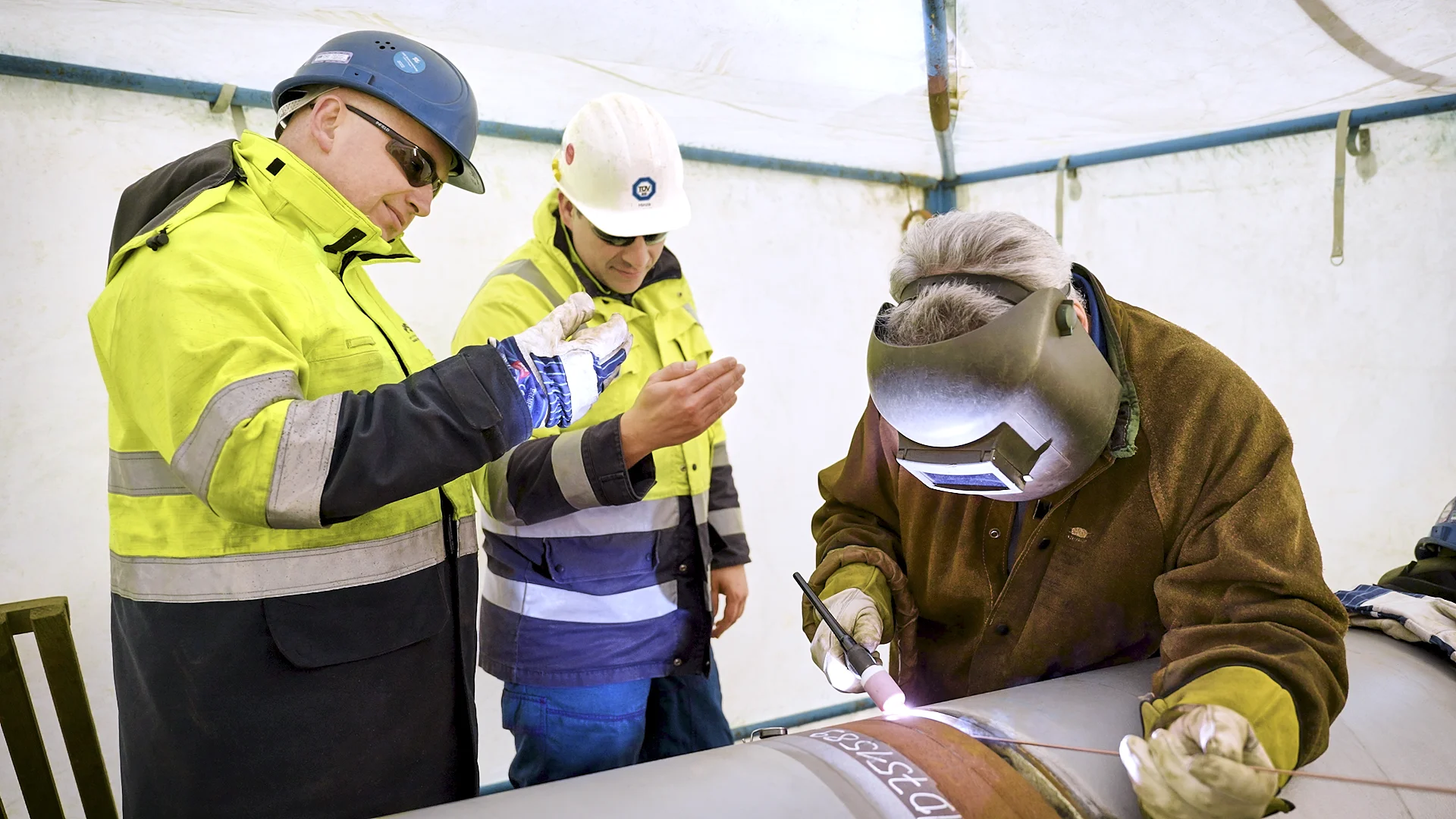Every kilometer of pipeline counts
Europe is getting ready for hydrogen. The supply network is growing, but there is still a lot of work to be done before it is all up and running. Andreas Hinze, Head of Plant Safety at TÜV SÜD, and his expert colleague Rene Siemermann are visiting construction sites across Germany to verify the viability of transporting hydrogen through existing gas pipelines in the future.

The pressure test can be used to verify the strength and tightness of each pipeline section.

Identifying with their work is easy for the two TÜV SÜD employees, as they also strive to reduce their carbon footprint in their personal lives.
Hydrogen is increasingly coming into focus as an energy resource of the future. The EU aims to transport up to 20 million tons across Europe by 2030, with a rising trend in the transportation volume. European gas network operators are seeking to make approximately 53,000 kilometers of pipeline accessible for this purpose by 2040 as the European Hydrogen Backbone.
“Experience and routine play a decisive role in the accurate interpretation of the digitally recorded pipeline data.“
Andreas Hinze
Head of Plant Safety
TÜV SÜD
The European Union plans to invest a minimum of 80 billion euros in expanding the pipeline network in the coming years, with numerous new routes to be constructed. The plans also include the conversion of existing natural gas pipelines. Challenges arise from the fact that hydrogen behaves differently than natural gas, necessitating upgrades to the pipeline systems. Andreas Hinze and Rene Siemermann, among others, are responsible for ensuring the safety of the systems through their testing. Equipped with advanced sensor systems such as intelligent pipeline inspection gauges (smart PIGs), a device for examining pipeline interiors, they check every meter of the pipelines to determine their suitability for future use with hydrogen. Experience and routine are factors of immeasurable value – as in the crucial pressure test, which is featured in our video.

